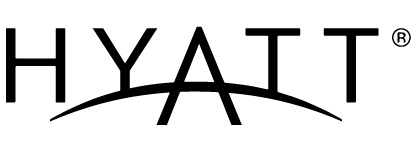Digital Twin Webinar: Understanding the Retail Analytics Glow-Up
Register Here →Regional Grocery Leader
How a centralized assortment tool paired with predictive analytics provides more opportunity to delight consumers with unique products and stocked shelves.

A leading regional grocery chain had deep expertise in tailoring product assortments to their local markets and individual stores, but buyers were struggling to get a clear picture of the impact of their decisions, leading to shelf updates with unpredictable returns. Our client needed a way to make smaller, more meaningful changes faster, and to better absorb the learnings from actions over time. A new centralized platform now gives buyers the right product insights at the right moment, balancing the art and science of assortment decisions.


The client’s original assortment tool was created as a centralized environment for the front-end of the product life cycle, but it was too complex for widespread, frequent adoption by decision-makers. Users lacked guidance around how to leverage features within the tool, data was not updated dynamically, and the tool required dedicated technical assistance.
The constant swing in supply and demand due to COVID-19 created an immediate need to take a closer look at out-of-stock and overstocked products and changes in sales in order to better adapt to customer needs. Additionally, users were often reliant upon intuition and historical knowledge when making assortment decisions. A shift was needed to help team members go from using data to support their actions, to using data to inform their actions.
Assortment tool users are accountable for lowering the cost of goods and procuring the right mix of products for stores. These users are also accountable for the strategy behind assortment decisions — but ultimately, time constraints, redundant manual data entry and paperwork led to the tool being largely underutilized. Additionally, users were often reliant upon intuition and historical knowledge when making assortment decisions. A shift was needed to help team members go from using data to support their actions, to using data to inform their actions.
Starting with insights from 11 discovery workshops and regular one-on-ones with buyers and analysts, we established a clear map of critical decisioning points in the current optimization process. Then, through iterative testing of low-fi concepts, we balanced algorithm-assisted recommendations with the store-tailoring strategies that proved most valuable to key user groups, like buyers.
Next, we translated assortment strategies that were being applied by users as one-off adjustments into rules that they could set to achieve more consistency. As the solution is rolled out broadly, users will be able to see the impact of these rules using side-by-side impact summaries, allowing them to dynamically test, evaluate, and finalize changes to their assortments more quickly, driving to in-store impact faster.

In order to support business development managers and buyers in making data-informed decisions, we built a framework to draw insights across diverse assortment reporting needs. By precisely connecting overarching business objectives to questions they needed answered, actions they’d take based on the answer, and workflow scenarios, we were able to map valuable investigative reporting to the right places in the tool’s information architecture.
By shadowing teams, mapping personas and completing card sorts across four key roles, we discovered how and why partners were motivated to make impactful progress on shelves over time.
Using the results, we proposed visual concepts for personalized views to a company-wide planogram, activity calendar. This new calendar functionality allows partners to nimbly and responsively understand and improve the execution of changes on-shelf. It provides added visibility across teams — breaking down silos with personalized and high-level views into activities within stores that buyers previously did not have insight into.
We explored inconsistencies within the intake process and discovered a buyer pain point caused by distracting or unclear email exchanges with suppliers. To provide an environment of control, we designed a concept for a platform buyers could use to explore and organize product candidates, invite suppliers to submit new items or discontinues, and complete initial vetting.
Through a new queue feature, buyers and suppliers can more easily communicate about potential future items or discontinued products to the level of detail buyers needs in order to make product evaluation decisions. By gathering data points that feed into more accurate forecasting, buyers can understand how potential new items will perform and can make more informed product buying decisions.
In early testing, we learned that buyers were largely inexperienced in constructing the decision trees that serve as the scaffold for assortments. Additionally, we found that buyers experiment through trial and error, testing new attributes and observing impact.
Building on detailed test insights clarified by system usability scores, we were able to design a tree builder that is easy enough for novices to manipulate through intuitive drag-and-drop interactions. As users become familiarized, they can easily access analytical views and customize attributes to improve their trees.




The new tool now acts as a centralized place for buyers as they gain insight to make informed decisions, communicate to stakeholders and note anomalies for specific store sales and products. Additionally, they can leverage the tool to manage and evaluate new product candidates, organize items, invite suppliers to recommend products, and complete product vetting.
The tool condenses large amounts of information to at-a-glance overviews that allow users to easily orient themselves, determine next steps, and resume workflows — leading to faster in-store impact, less guesswork and decreased manual data entry.
With the support of a decision tree tool — the backbone of the new application — buyers can use predictive analytics to build a more accurate picture of customer behaviors, which they can use to structure their future product assortments. The tree ranks each item in a current assortment, compares items to like items or possible substitutes, and shows the amount of product that can fit on the shelf — providing a granular understanding of performance in the past and predictions for the future. Based on ranking and optimization logic, overall recommendations are provided to buyers, who can then drill into individual stores. Prior to the assortment tool, buyers were making these decisions themselves, but with the additional analytics provided they now have a clearer picture of customer preferences.

This data optimization work requires investment into the process, more sophistication and more data than users are likely used to. As a result, an approach to change management was foundational to the success of the tool. By creating opportunities for both short- and long-term wins, the product is appealing to new adopters by providing the right data at the right time, and to the right people.

The new tool has been one of the most successful products in the organization, enhancing overall product data and improving team processes. The centralized hub for buyers allows them to easily see and optimize the health of their current assortment as well as make changes dynamically to capture the biggest opportunities, as they arise.
Fusing together analytics and activity management, the application will drastically reduce overall shelf activity planning timeline from one year down to three months, and reduce individual assortment tailoring time from 20 hours to one hour. Most of all, it will give buyers more time and better tools to tailor products to their communities — the differentiator that sets the business apart from its competition and keeps consumers returning to the store.
Reduces overall shelf activity planning timeline from one year down to three months
Reduces individual assortment tailoring time from 20 hours to one hour











